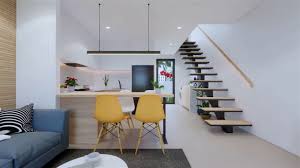Exploring the Essence of House Interior Design: Creating Your Dream Home

The Art of Interior Design: Transforming Your House into a Home
When it comes to creating a space that truly feels like home, interior design plays a crucial role. The way you choose to decorate and arrange your house’s interior can have a significant impact on the overall ambiance and functionality of the space.
Interior design is not just about making a room look pretty; it’s about creating a harmonious environment that reflects your personality and lifestyle. Whether you prefer modern minimalism, cozy rustic charm, or elegant luxury, there are endless possibilities to express your unique style through interior design.
Key Elements of Interior Design
Color scheme, furniture selection, lighting, textures, and accessories are some of the key elements that come together to create a well-designed interior space. Choosing the right color palette can set the mood for the room, while carefully selected furniture pieces can optimize both comfort and aesthetics.
Lighting is another crucial aspect of interior design. Natural light can make a room feel spacious and inviting, while artificial lighting fixtures can enhance specific areas or create different atmospheres depending on the desired effect.
Personalizing Your Space
Your house should be more than just four walls and a roof; it should be a reflection of who you are. Personalizing your space with meaningful decor items, family photos, artwork, or souvenirs from travels can add character and warmth to your home.
Experimenting with different styles and mixing old with new can create an eclectic and visually stimulating environment that tells your story. Don’t be afraid to get creative and think outside the box when designing your house’s interior!
Creating Functional Spaces
In addition to aesthetics, functionality is essential in interior design. Each room should serve its purpose efficiently while maintaining a cohesive flow throughout the house. Smart storage solutions, versatile furniture arrangements, and thoughtful layouts can maximize space utilization without compromising on style.
In Conclusion
Interior design is both an art form and a science that requires creativity, attention to detail, and practicality. By carefully curating each element of your house’s interior, you can transform it into a welcoming sanctuary that reflects your taste and enhances your daily living experience.
5 Essential Tips for Enhancing Your Home’s Interior Design
- Use light colors to make a room feel more spacious.
- Incorporate mirrors to create the illusion of more space and light.
- Mix different textures and materials for a visually interesting look.
- Don’t overcrowd a room with furniture; leave some breathing space.
- Add personal touches like artwork or photos to make the space feel more inviting.
Use light colors to make a room feel more spacious.
Using light colors in interior design is a clever trick to create an illusion of space in a room. Light hues such as whites, creams, and pastels reflect natural light, making the room feel airy and expansive. By painting walls, ceilings, and furniture in light shades, you can visually open up the space and create a bright, welcoming atmosphere. Light colors not only make a room feel more spacious but also add a sense of freshness and tranquility to the overall ambiance.
Incorporate mirrors to create the illusion of more space and light.
Incorporating mirrors into your house interior is a clever design tip that can instantly make a room feel more spacious and brighter. Mirrors have the magical ability to reflect light and visually expand the space, creating an illusion of depth and openness. By strategically placing mirrors opposite windows or light sources, you can maximize natural light and enhance the overall ambiance of the room. Additionally, mirrors can add a touch of elegance and sophistication to your decor while serving a practical purpose in making your space feel larger and airier.
Mix different textures and materials for a visually interesting look.
To create a visually interesting and dynamic interior, consider mixing different textures and materials in your home decor. Combining smooth surfaces with rough textures, shiny finishes with matte ones, and natural materials with man-made elements can add depth and richness to your space. This layering of textures not only adds visual appeal but also creates a tactile experience that makes your home feel more inviting and engaging. Experimenting with a variety of textures and materials can help you achieve a unique and personalized look that reflects your individual style and enhances the overall aesthetic of your house interior.
Don’t overcrowd a room with furniture; leave some breathing space.
When it comes to designing the interior of your house, remember the importance of leaving breathing space in each room. Avoid overcrowding the space with furniture to allow for a sense of openness and flow. By leaving some breathing room, you not only create a more visually appealing environment but also promote better functionality and movement within the space. Embrace minimalism and strategic placement of furniture to ensure that each piece serves its purpose without overwhelming the room. This simple tip can make a significant difference in creating a balanced and harmonious interior design that feels spacious and inviting.
Add personal touches like artwork or photos to make the space feel more inviting.
Adding personal touches such as artwork or photos to your house’s interior is a simple yet effective way to infuse warmth and personality into the space. By displaying pieces that hold sentimental value or reflect your interests, you not only create a visually appealing environment but also establish a connection to the space that makes it feel more inviting and comforting. Whether it’s a cherished family photo, a favorite painting, or unique art pieces collected during travels, incorporating these personal touches can transform your house into a home that truly reflects who you are.
